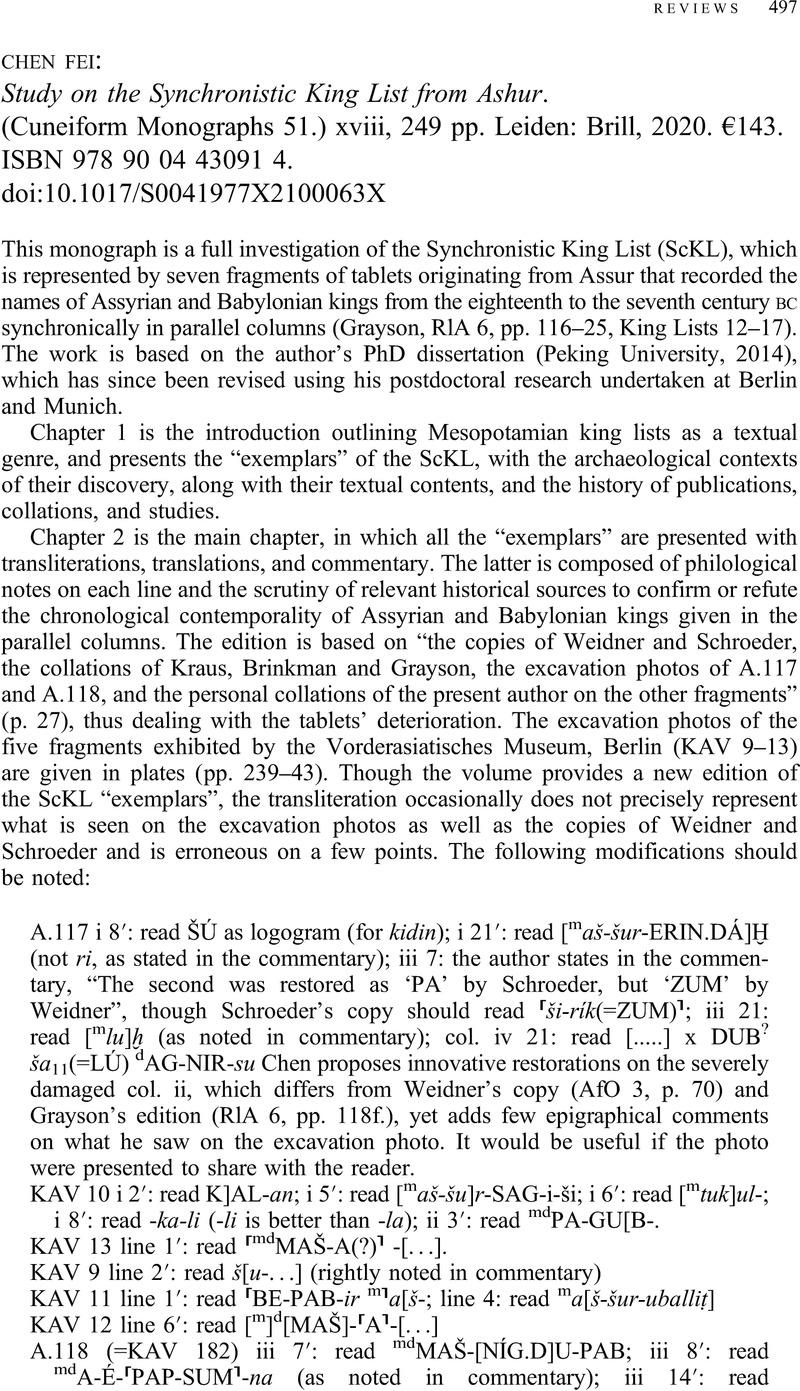No CrossRef data available.
Article contents
Chen Fei: Study on the Synchronistic King List from Ashur. (Cuneiform Monographs 51.) xviii, 249 pp. Leiden: Brill, 2020. €143. ISBN 978 90 04 43091 4.
Review products
Chen Fei: Study on the Synchronistic King List from Ashur. (Cuneiform Monographs 51.) xviii, 249 pp. Leiden: Brill, 2020. €143. ISBN 978 90 04 43091 4.
Published online by Cambridge University Press: 09 March 2023
Abstract
An abstract is not available for this content so a preview has been provided. Please use the Get access link above for information on how to access this content.

- Type
- Reviews: The ancient Near East
- Information
- Copyright
- Copyright © The Author(s), 2023. Published by Cambridge University Press on behalf of SOAS University of London



